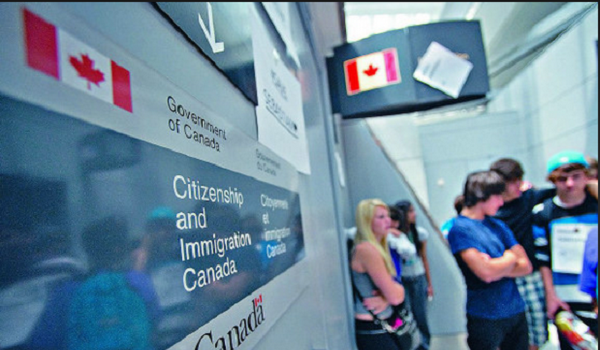Toronto has witnessed an increasing number of homelessness over the last March
It was the tents at Rowntree Mills Park that caught the eye of veteran Toronto outreach worker Diana Chan McNally. She’d never seen an encampment here, by the banks of the Humber River north of Finch.
Yet, as of mid-March, at least three tents were erected in this riverside greenspace, deep in northwest Toronto. To Chan McNally, it’s yet another symptom of a ballooning crisis — as city data shows the number of tents in ravines, parks and under bridges is more than double last spring’s count.
Where workers counted 82 tents or other makeshift structures set up citywide on March 15, 2023, that shot up to 202 on the same date this year — edging closer to the 291-tent count seen in the mid-pandemic spring of 2021.
Some of that growth comes from more concentrated downtown locations, such as the mass of tents in Clarence Square Park. But smaller camps have also arisen in further-flung corners, such as Milliken Park in Scarborough and in the parklands along the west-end Humber River.
It’s a situation that points to ever-rising desperation, advocates and city officials say, and the urgency of creating affordable homes as a way to reverse course. “It’s just an overall explosion in homelessness,” Chan McNally said.
Why have numbers risen?
To understand why camps have grown, Greg Cook — another long-time outreach worker — says it’s as simple as looking at the numbers. A rising number of people are losing the roofs over their heads, with 1,056 people entering shelters in February versus the 864 who moved out. An average of 158 people each day that month called to find a bed, but were turned away.
It’s a similar story month after month, Cook noted, as climbing rents make it harder for people to find and keep their housing, and mounting demand for shelters means they’re often packed. To him, it was no surprise that Toronto encampments have more than doubled — and he cautioned the city’s count may not fully capture the scope as some tents are more hidden.
The data provided to the Star appears to have some blind spots — for example, it shows zero tents on any of the four dates at an often densely packed location beside the Church of Saint Stephen-in-the-Fields in Kensington Market, nor any at Sanctuary Toronto near Yonge and Bloor streets, where Cook works and says tents would have certainly been.
Gord Tanner, city hall’s head of homelessness initiatives, says the data is limited as it captures a single point in time, while encampments ebb and flow.
“Certainly, we’ve had activity at those locations over the course of the years that we’re talking about,” he said. But even with those limitations, the city hall data makes clear numbers are growing — and Tanner expects that to continue as the weather warms, with camps typically growing in the summer. Last year, the count rose from 82 tents in mid-March to nearly 200 by mid-May.

Chan McNally noted there may be time-specific factors affecting this spring’s data, noting the March snapshot corresponds with changes such as the closure of a temporary 300-person respite at the Better Living Centre. While some occupants likely transitioned to other sites, she said it’s also likely some people have set up camp somewhere instead.
“You have to factor in the closure of a couple of spaces,” she said, while pointing to the sheer force of demand — from longtime Torontonians who’d lost their homes and new refugees alike. “There’s also this ongoing process of more and more people falling into homelessness.”
More tents spread farther apart
While the number of tents and makeshift structures citywide has risen closer to numbers seen mid-pandemic, the 2024 data shows there has not been a return to the scale of camps seen in previous springs — with the largest camp this year being Clarence Square Park at Wellington Street and Spadina Avenue, which had 23 tents or structures as of March 15 versus the 56 at Alexandra Park in spring 2021 or the 37 in Allan Gardens on March 15, 2023.
Where the pandemic saw a number of sizeable camps citywide — in locations such as Trinity Bellwoods and Lamport Stadium in the city’s west end — the second largest site as of this spring was the 13 structures counted at Cherry Beach’s Clarke Beach Park, followed by 12 structures that remained in place at Allan Gardens.
Instead, camps have spread further across the map, with three times as many locations with tents this spring compared to last. To Chan McNally, this trend may reflect people trying to avoid being hassled or told to move — particularly as some people have expressed frustration or annoyance at homelessness in public spaces such as the TTC. “They’re trying to actively be invisible in public spaces.”
The drop at Allan Gardens, Chan McNally noted, has corresponded with a heightened city hall effort to try to move occupants into housing — with concentrated resources and housing aid directed towards that particular park, while security has also been deployed to prevent new tents from popping up. She was glad to see a number of people secure housing in that process, though she worries about supports being limited to those already in place.
Tanner said the focus on existing occupants was a “tough decision” made as affordable homes and resources such as rent subsidies are in too-short supply, with market prices rising and income supports still prohibitively low.
“This is a challenge we have in the delivery of shelter beds and scarce housing resources,” he said, noting that Allan Gardens was prioritized due to its size, and their approach was to focus on those who’d been encamped the longest.
What happens now?
Tanner says city hall is placing a trailer at Clarence Square to create a more permanent presence for city workers — whether street outreach teams or security — to try to emulate the Allan Gardens strategies. It’s an approach he hopes to see city hall formally endorse, as staff intend to present a revamped encampment strategy to Toronto’s economic and community development committee later this month, then to council in May.
That document — which Tanner says will respond to recommendations made by Toronto’s ombudsman in response to past encampment clearings — will include an “updated protocol” city staff can refer to, Tanner noted.
Cook, the outreach worker, fears the varying departments involved in the city’s encampment response — from parks to transportation staff — may still result in an uneven approach. As the summer nears, he hopes to see officials focus on the bigger picture, with governments at all levels showing increased urgency around creating affordable homes.
“Toronto needs to stop taking a reactionary approach to the growing crisis,” he said.
This article was first reported by The Star
















